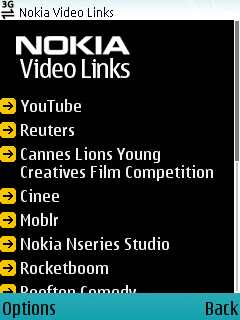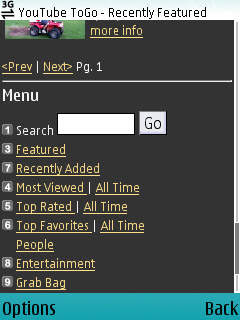I promised not to describe some of the details of their implementation, because the patents haven't all been filed, so I apologize in advance that I'll have to leave some blanks. But here goes...
The company, Inrvoice LLC, has great credentials -- it was founded by former engineers from Netscape and RIM, who teamed up with a group of biomedical researchers from UC San Francisco. It's funded by a consortium of A-list VCs from Stockholm and Palo Alto. That in itself is unusual -- usually startups like this are funded only in one region. But I think the cross-cultural aspect of the service make its appeal universal.
The folks at Inrvoice are targeting one of the key drawbacks of today's social networking software -- the need to type ideas and comments in order to share them with others. Instead, Inrvoice's software directly captures the thoughts of users, as they happen, and shares them automatically with everyone in the user's social network.
I'm not allowed to give all the details of the process, but suffice it to say that it involves Bluetooth wireless, the user swallowing a small sensor pill, and one of the first commercial deployments of nanomachines that I've heard of.
The product is called Spitr, and I'm sure you'll be hearing a lot more about it in the weeks to come.

Spitr's ability to share thoughts rather than typed words dramatically increases the efficiency and richness of interactions on social networks. No longer do you have to guess what one of your friends might be thinking on a moment to moment basis; no longer do you miss out on nuances or ideas that they might not normally have time to share.
As an example of Spitr's power, here's a real Spew (the company's term for a transcript of a user's thoughts). I've been asked not to give the user's name, but I can tell you that he/she is a blogger and executive at a major Web company, attending a recent conference:
11:45:39 i wonder if there are any new comments on my blog
11:45:44 huh, the next speaker is making a web service that recycles composted kitchen waste
11:45:47 i dont get it. who eats at home anymore
11:45:49 when the hell is the lunch break
11:45:48 this company doesnt make sense to me but arrington likes it so i should invest
11:45:53 i wonder if there are any new comments on my blog
11:45:57 damn my new shoes look cool
11:46:03 hey what the hell was that. did something bite me or did i just sit on a tack. wait if i grab my butt i'll look stupid. dont move
11:46:07 ow ow ow it really hurts
11:46:01 dont move dont move
11:46:04 maybe if i pretend to adjust my sock i can lean over and
11:46:07 ahhh much better
11:46:08 damn i sat on my usb drive. hope i didn't break another one
11:46:10 is that guy still talking about kitchen waste
11:46:12 tim looks really good in that jacket
11:46:15 i wonder if there are any new comments on my blog
Currently, Spitr Spews are only one-way: the user's thoughts are transcribed and sent in writing to other members, who read them on their PC or mobile phone. The company is working on two-way Spews which transfer thoughts directly between the minds of recipients, but needs to do more work before it turns on the feature. In an early two-way test, the thoughts of Steve Ballmer and Eric Schmidt were accidentally linked in a single session, producing a destructive feedback loop that took down Sprint's EVDO data network for twenty minutes. The company is confident that new filtering software can prevent those loops in the future.
Even in its one-way mode, Spitr makes an incredible improvement in the frequency and detail of social messaging. But once it becomes two-way, it'll really take off. I think some of the most promising usages are:
Workgroup collaboration. A work team in a company could be continuously linked to one-another in a two-way Spew. The effect would be like a continuous staff meeting 24/7, but removing all remaining illusions that people might actually be paying attention.
International understanding. Another exciting aspect of Spitr is that the company is exposing an API to the service, enabling others to create mash-ups of Spitr with additional web services. One of the first mashups has combined Spitr with BabelFish to produce BabelSpit, which produces instant translation of a user's thoughts into six different languages. Here's the translated Spew from a Japanese tech executive attending that same recent conference:
11:45:33 As for me it is not possible to believe those which these people make their kitchen scraps.
11:45:42 I putting, tonight it is possible to be able, whether or not you think in doubt.
11:45:48 I me Tokyo yakitori which is eaten and desire the fact that it returns to the beer which is drunk.
11:45:57 As for me it is necessary to arrange the hair of my ear.
11:46:07 That man is he grabbing his underside?
11:46:12 Whether or not there is new comment in my blog, I think.
Spitr's potential impact on international communication is obvious.
Celebrity interest groups. Fans of a celebrity could subscribe to a one-way Spew feed (a "Spweed") to monitor the thoughts of celebrities throughout the day. Inrvoice hasn't yet disclosed its financial model, but I believe this is how it will monetize the service. Imagine how much fans would pay to track Paris Hilton as she tries to remember whether she has a valid driver's license, or Britney Spears as she ponders the underwear yes/no question.
I think that's just the start, though. Every Spitr account automatically generates a Spew feed, giving each and every one of us the opportunity to auction off the last shreds of our privacy and create a circle of obsessive admirers. This is the ultimate evolution of social networking, and I expect to see Spweeds pop up rapidly on MySpace and weblog sidebars.
Biometric sharing. Since they're already placing sensors in the body, an obvious next step for Inrvoice is to add biometric data to the Spew feed. That's apparently what the company is planning, judging from the screen shot below that I found on a bulletin board:

One application of this could be to help a social group of teenage girls plan a shared trip to the bathroom.
I think this is a very powerful and extensible feature. Picture the company pairing the biometric data with the GPS in your mobile to deliver customized location-aware services. For example, you could configure your phone to automatically order a pizza delivered to your location whenever you reach a certain hunger level. Or you could scan a dance club for people with compatible levels of libido and blood alcohol.
The possibilities are endless.
Implications for the industry. I'll be interested to see how the Spitr service develops over time. There are sure to be efforts at clones from other companies, although the Inrvoice folks seem to be pretty confident that their patents will hold up. Google and Microsoft would obviously be interested, if only for the possibility of slipping ads directly into the thought streams of users. And I think it would be interesting to see what Apple would do with it, especially since Mac owners are already close to a group entity.
I'm sure we'll know more by the next time April first rolls around.










+(3).jpg)
.jpg)












